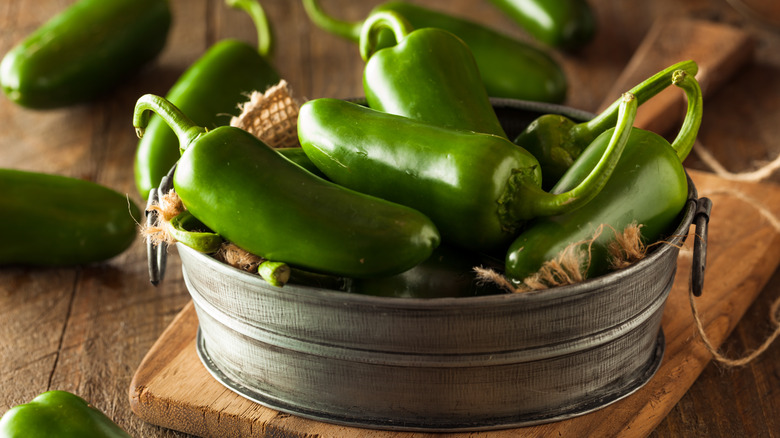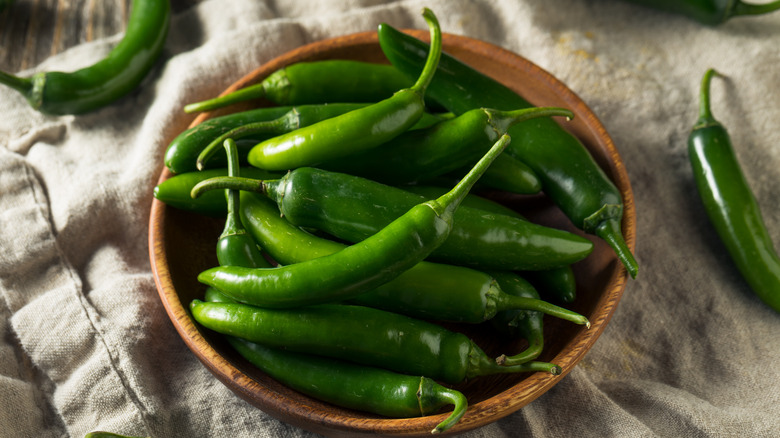What's The Difference Between Jalapeños And Serranos?
All hot peppers are not the same, although sometimes they may look the same. This is the reason that people get confused between jalapeño and serrano peppers. The differences between these two hot peppers are important to understand.
Wide Open Eats describes jalapeños as two to three-inch-long chili peppers, and one of the most common varieties sold at grocery stores. Though the peppers can ripen to yellow or red, they're most often eaten while still green. The hotness of jalapeños can vary but they top out at about 8,000 Scoville heat units. That may seem high, but it actually puts jalapeños in the medium range. (The tongue-searing Carolina Reaper pepper registers around 1.5 million Scoville heat units!)
One reason jalapeños are a grocery store staple is that they're so versatile. They can be enjoyed fresh, like in salsas or sliced over nachos. They're also delicious roasted or pickled, and their size makes them easy to stuff and fry into poppers. They have some heat (and some jalapeños are hotter than others,) but not so much that you have to worry about the spiciness overwhelming the rest of the dish.
Fun fact: jalapeños that have ripened to a bright, red hue are the key ingredient of Huy Fong sriracha sauce! But what sets these fun peppers apart from serranos?
Serrano peppers pack a spicier punch
There are a couple of things that serrano peppers have in common with jalapeños. Both chili peppers are native to Mexico, although serranos grow in more mountainous regions. Serranos also have a fresh flavor that's very close to that of jalapeños. Beyond these similarities, there are some key differences you should know. For one thing, Spoon University says that serranos can be much hotter: they range from 10,000 to 20,000 Scoville heat units. While jalapeños can vary in how hot they are, serranos are reliably hot.
If you're trying to tell one pepper from another in the produce aisle, serrano peppers are smaller, about one to four inches long, and have a narrower, torpedo shape. Serranos can range from yellow to brown or red as they ripen, but they can also be sold green; so knowing the size and shape difference is important.
Because the flavors are similar, you can substitute one pepper for the other, as long as you remember that serranos will be spicier (so use less of them.) MasterClass says serranos can be used in endless ways: pickled, chopped into salsas, made into fiery hot sauces, or used in dishes like tacos and enchiladas. Don't limit yourself to just Mexican foods because these peppers are also used in Thai dishes. One last tip from Masterclass: the heat of serranos builds slowly, so go slowly between bites!

